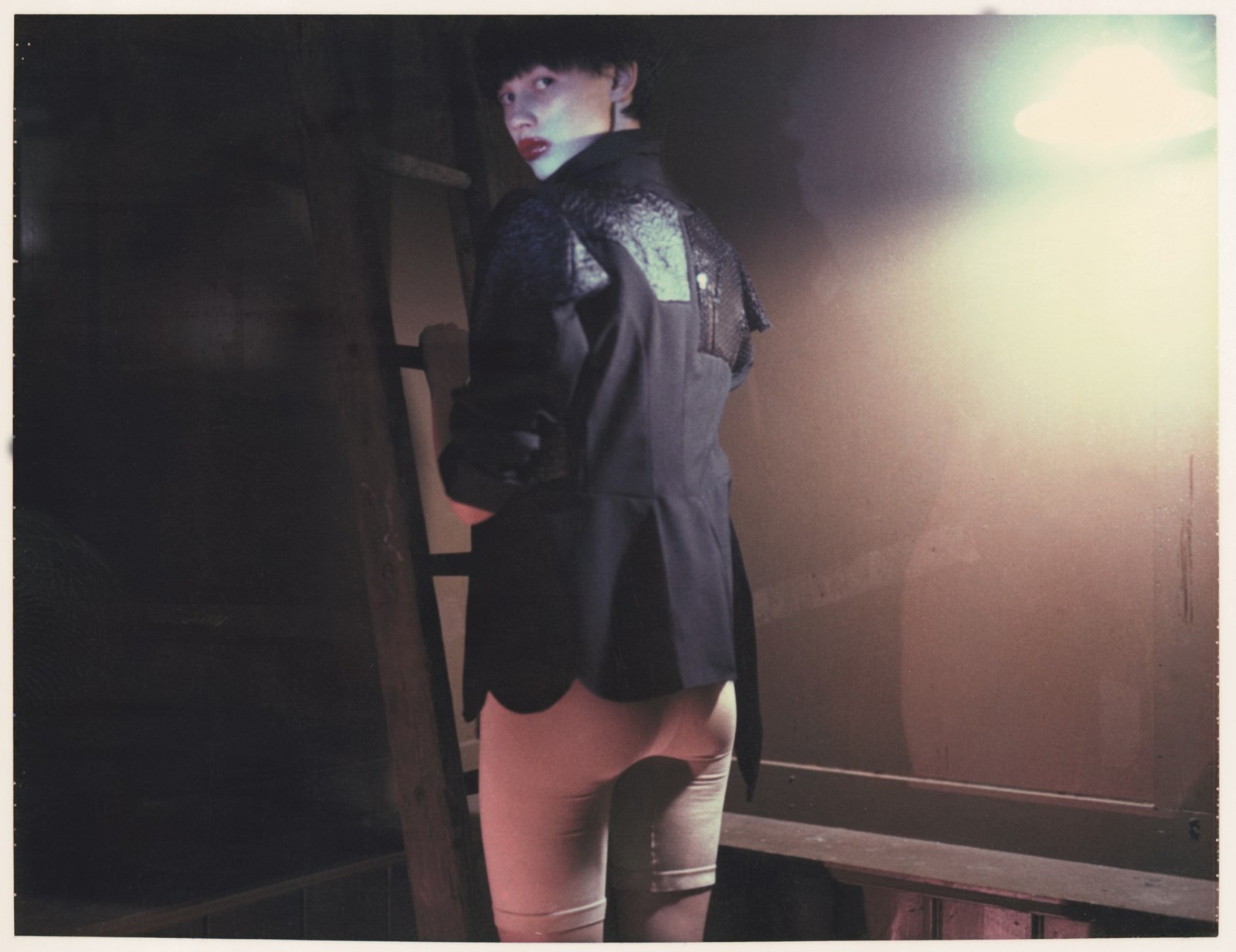Ask anyone working in the fashion industry which living designer they most admire, and chances are they will say Rei Kawakubo of Comme des Garçons. We ask some friends, from Stephen Jones to Nick Knight, Alexander McQueen to Björk, just what is it that makes the elusive designer such an unlikely figurehead for fashion, and print a rare written response from the lady herself.
Kawakubo is intentionally oblivious to the preoccupations that might motivate her contemporaries: the rise and fall of skirt lengths is of no consequence, the colour, fabric or reference du jour is not even remotely relevant in her world. Four times a year Kawakubo flies from her Tokyo base to Paris, bringing with her an entire, and entirely devoted team, and unveils her men’s and women’s collections, each one different from the last. One season the designer might decide that she’s only interested in skirts, for example – models’ top halves are naked – the next, doll-size dresses and jackets might be appliquéd to the front of life-size garments. One moment, the cliches of the Moulin Rouge, and erotica more broadly, might be dissected; the preconceptions of the bridal gown another.
Today, Kawakubo is such a revered name that it is all too easy to forget how challenging her trajectory has been, not only for those who have witnessed it but also – and even more so – for the designer personally. In the early days it was not uncommon for members of the principally Western and resolutely bourgeois fashion industry to run from her shows in their droves. Kawakubo, it was said when she first showed in Paris in 1981, was deliberately ruffling the feathers of those who watched on confounded, although that is probably not the case. The designer may be as determinedly anti-establishment as it is possible to be within the limits of the industry, but the overriding sense is that she is living and working on her own terms as opposed to being provocative for the sake of it.
“When I questioned her on the thinking behind her most recent offering, she sat down, drew a picture of a circle on a piece of paper, and promptly disappeared” – Susannah Frankel
In person, the designer is as difficult to pin down as her clothes. That she dislikes the face-to-face interview process is clear. The first time we met was more than ten years ago at her Paris headquarters, Place Vendôme. When I questioned her on the thinking behind her most recent offering, she sat down, drew a picture of a circle on a piece of paper, and promptly disappeared. This was all the more remarkable given that the season in question was the by now famous Body Meets Dress, Dress Meets Body 1997 collection, one of her personal favourites, featuring padded humps at shoulders and hips that were far from conventionally easy on the eye.
Since that time, we have met on many occasions. The designer sits patiently and always politely and answers all questions through any number of highly protective interpreters. But her response is, for the most part, deliberately, and at times prohibitively, opaque. Her company is called Comme des Garçons – as opposed to Rei Kawakubo – because as she has told me, she “just likes the way it sounds”. The colour gold reminds her of “Dubai, of the Vatican and of teapots” but she would rather not be taped making such observations, in fact, she would rather not be taped at all. Each season she issues a one- or two-word statement of intent – this season’s is “adult delinquent”. No further explanation is offered, nor required, as far as she and her team are concerned.
There may be many reasons why Kawakubo resists verbal communication – one might attribute it to a deep mistrust of members the press who, let’s face it, were plain antipathetic when she started out or, simply to the fact that the designer may well just be shy. No matter because, in the end, all of Kawakubo’s energy goes into the further enhancement of the Comme brand from in-store display and design to fragrance and, over and above anything else, into clothes. This, along with the following deeply respectful responses from people who have been inspired, moved and even laughed at by Kawakubo, speaks volumes about the designer.

Alice Rawsthorn, journalist
“I came across Comme des Garçons in the early 1980s, a season or two after Rei Kawakubo first showed in Paris. At the time I was a trainee journalist with no money and still dressed by customising jumble sale bargains. But as soon as I could afford to, I started buying a piece from Comme each season. Fashion was much more politicised then, because feminism was so important. What you wore said so much about your own identity, and how you wanted to represent your gender. Comme was the perfect solution. Swathing yourself in those black folds felt super chic, super uncompromising, super radical and super feminist – like waving a very elegant two-fingered salute at the establishment.
Together with Yohji Yamamoto, the Sony Walkman, Muji and manga, it was also part of a fascination with all things Japanese that enthralled us for much of the 1980s. It wasn’t until much later that I realised quite how amazing it was for a woman – Rei – to have founded and run her own business in such a misogynistic corporate culture as Japan. And it took even longer to appreciate how few other companies were as brilliantly branded as Comme. Everything it does is fantastic. The Cindy Sherman ads. The Claude Cahun posters. The flagship store on Omotesando, and Cornish boatyard-built entrance to West 22nd Street in New York. The Shirt campaigns. Dover Street Market. And where else would I buy a wallet?”
“Rei doesn’t compromise, nor should she. No one should compromise. Compromise makes people dull” – Alexander McQueen
Alexander McQueen, designer
“I remember going to the Brook Street store years ago now. You felt so unwanted that you wanted to be wanted. I bought a Comme des Garçons striped shirt for £129. Why was it special? It had ‘Comme des Garçons’ on the label. I think that every designer you ask will be influenced by Rei in one way or another but what makes them a good designer is them moving the Rei concept on for their own label – the tulle over a suit, masking a jacket over a coat, pearls trapped inside layers of fabric – moving it forward, not just taking it, digesting it and regurgitating it the same way. What’s really impressive about her is that she’s never backed down. I believe everyone should be like that, but it’s hard. I’ve been in this business for 20 years now and I know how tough it is to do the things you want to do. Rei doesn’t compromise, nor should she. No one should compromise. Compromise makes people dull.”
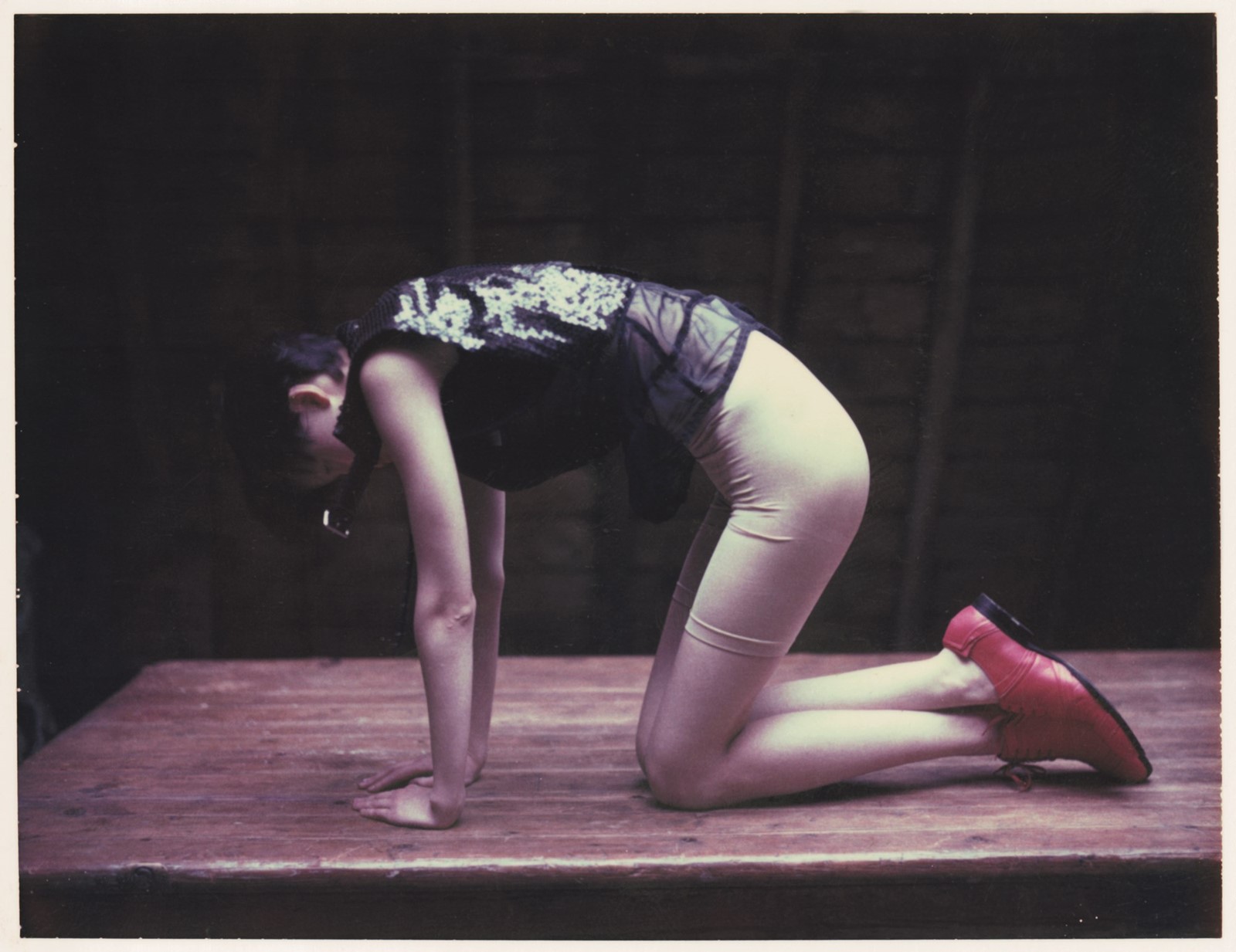
Lady Amanda Harlech
“Words miss, skew and slip past Rei – they only describe a surface. I think she understands the crosscurrents and perilous waters of dressing as a woman. She is a poet. We recognise the lyric narrative in the cloth, which she overlays or twists into a new response to who we are today. The colour sense, the textural subtlety, the form, it all adds up. Rei transformed the nature of dressing for me and remains an inspirational light in my eye. When I am lucky enough to see one of her shows I am moved and stilled, it’s almost religious, like receiving a blessing.”
“I think she has definitely proved that it is possible to be that brave, that it is possible to keep one’s integrity” – Björk
Björk, musician
“I remember going to the London Comme des Garçons store with Nellee Hooper in about 1992. It was definitely the most sacred store I’d been in yet. I was tiptoeing around and found it uncomfortable to speak to the personnel. They might catch the greedy look in my eye. In person, Rei reminded me of my grandmother – a much younger, Japanese version. She was confident, calm, not falling for any pressure to take part in small talk or other social behaviour, not moving out of her integrity zone for others. I think she has definitely proved that it is possible to be that brave, that it is possible to keep one’s integrity.”
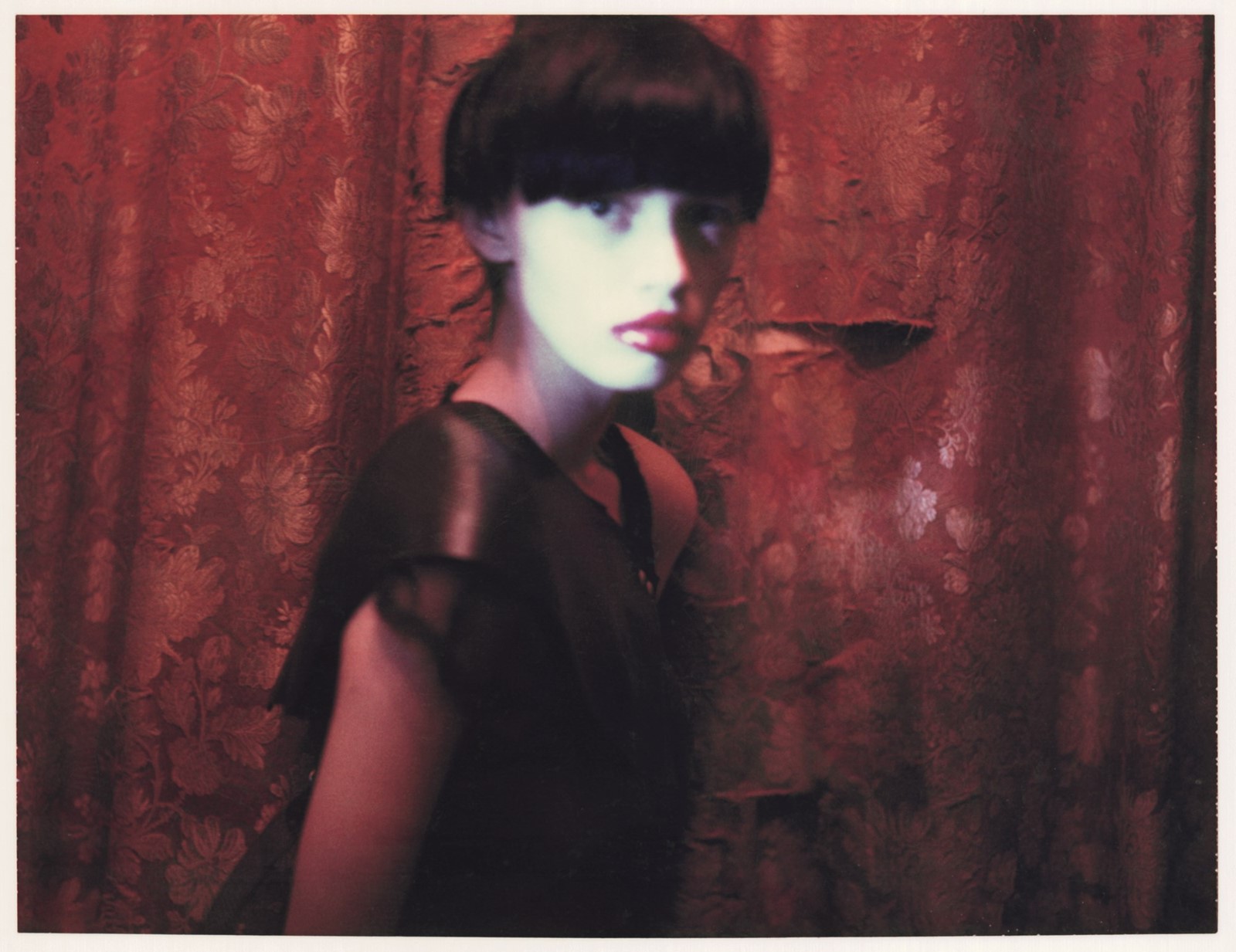
Ann Demeulemeester, designer
“I respect Rei. The less words, the better. That’s how Rei herself likes it best. She just gives her talent and vision to the world. The first time I discovered Comme des Garçons was back in the beginning of the 80s. Seeing her work gave me the impression that everything was possible, that it was the beginning of the future of fashion. It was so exciting. Today 2009 is not what I thought it would be back then. But some people, like Rei, continue what they started with faith and believe in the strength of an individual voice. In the end it’s the only way we can honestly and truly give.”
Daphne Guinness, collector of haute couture
“I first came across Comme des Garçons in 1989 when I think they were based in Greene Street, SoHo. It was at the time when SoHo was full of art galleries and I remember Comme being very different from anything else that was around at the time. The whole company reflects Rei’s aesthetic of individuality and it feels like a family. It is wonderful to see that companies like that exist; a business that doesn’t feel corporate, Comme is a model of what art combined with clothing is all about.”
“I respect Rei. The less words, the better” – Ann Demeulemeester
Edward Enninful, fashion editor
“I was about 16 when I first came across Comme des Garçons. Nick Knight, Simon Foxton, Judy Blame, that whole gang, they introduced me to Comme. I didn’t meet Rei until 1996. I’d always really admired her work so I was intimidated on the one hand but I also thought she was very funny. Everyone thinks she’s really serious. But she’s so funny, so dry. We always laugh. She’s also, of course, very creative.
She proved that you could be an outsider and still be influential, that you could follow your instincts and still make a difference. You didn’t have to be the norm. You didn’t have to conform. To me, Rei’s totally punk rock. She’s on her own track. She does her own thing and people follow. You can see her influence in the work of numerous designers. In the 80s she changed the way that people looked at black. People wear black – all the different shades of it – because of Rei. And a lot of designers today wouldn’t exist had it not been for her pioneering vision. I think that now she’s in the pantheon of the gods. What can you say? There are designers and there’s Rei Kawakubo.”
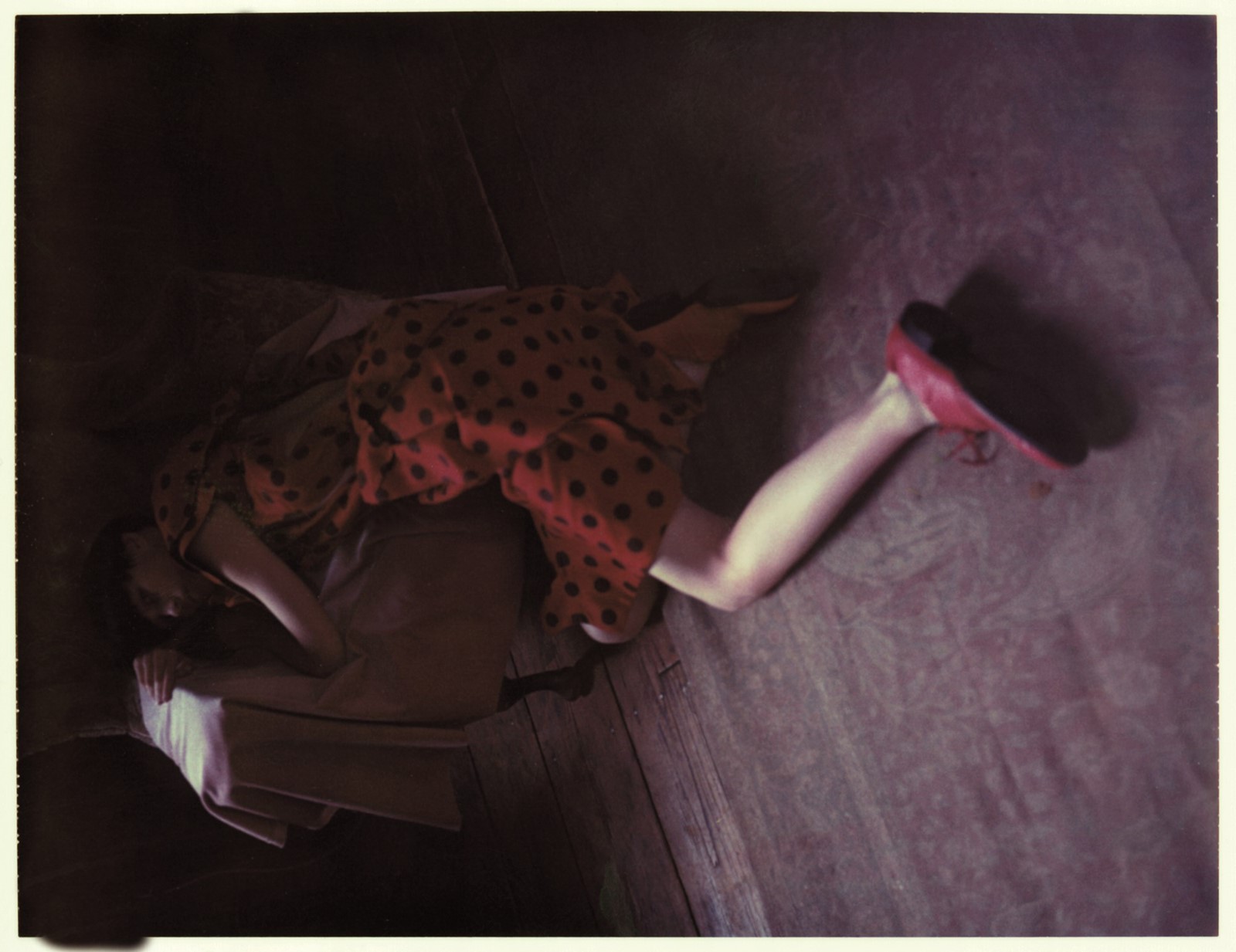
Nick Knight, photographer
“I’ve been aware of Comme des Garçons since about 1985. That Japanese moment, that huge new wave of Japanese design that came through in the mid-80s, with Yohji and Comme, hit at a point with me and fashion photography when that was exactly what I wanted to see. I didn’t want to do photography that looked like the stuff that Guy Bourdin, Helmut Newton or Bruce Weber had been doing, or any of my contemporaries at the time were doing. It was all very sexual and I didn’t want to do that kind of photography. I wanted to do something that was about presenting women in a different way. And what I thought about both Rei and Yohji was that they had visions of women that weren’t based on sexuality; they were about women’s intellect and fantasy as opposed to their sexuality. Previously fashion had been all about shoulder pads and about power dressing, the whole vampy thing.
There was Saint Laurent and the designers of the early 80s – Gianni Versace, Donna Karan – and photography was in keeping with that. It was either Peter Lindbergh’s Italian neorealism or it was Weber’s 1930s-inspired health photography or it was Arthur Elgort’s dancing stuff, those were the major influences around and they were pretty much rooted in the fashion that had happened over the last 15 years. When Comme and Yohji came along there wasn’t, in my opinion, a photographic language to interpret what they did and I was very interested in that. More than 20 years later, I still love getting Rei’s clothes in editorials and, of course, you do quite often. They have that weird mixture of Japanese minimalism and nihilism and Walt Disney. It’s a very strange mixture and one that I find fascinating.”
“Rei was the first designer to symbolise a change in attitude. She’s a non-conformist. Just at the moment you think she’s made the rule, she breaks the rule” – Ronnie Cooke Newhouse
Ronnie Cooke Newhouse, creative consultant
“I was one of the founding owners of the original Details magazine and we were among the early supporters of Comme des Garçons, but I didn’t know Rei then. That was from 1982 to 1989. For us, she was like the ultimate visionary. We were about Downtown life, which was a world of artistically minded people living together. It wasn’t a world based on economics. Comme was always expensive and I’m not saying I had much of it. I would buy it on sale.
Rei was the first designer to symbolise a change in attitude. She’s a non-conformist. Just at the moment you think she’s made the rule, she breaks the rule. She’s the most consistently unpredictable person in our business. I think her influence is so wide that I would even go so far as to say that if she hadn’t been there then Apple wouldn’t exist. Even though it doesn’t touch on her world, it’s a brand that has always spoken to people who saw her as a guru, which catered to the more media- and creatively orientated. Rei connected all of those people internationally.
I started working with Comme about 12 years ago. In person, I’d describe Rei as really funny: look at what she designs. She’s totally ironic, a voyeur, and someone who loves animals. She has a morality. She has a great sense of dignity. She has a great sense of humour. She has a great sense of caring in her own way. I wear the clothes and I’ve always found there to be something very classic about what she does. The taste level is amazing. It’s so pure. The spirit, the intelligence and the way it all comes together. It’s just perfectly pitched. I think Rei cares about what her customers think.
She certainly isn’t thinking about reviews when she’s working, although she may read some. She speaks to her customers. She’s a businesswoman as well as a designer. She goes into her shops all the time. She thinks about how clothes are displayed; how they’re going to be worn; about the environment in which you shop, she thinks about what else you might want when you’re there. She cares about the real things, the things that matter. A lot of designers never go into their own stores; they don’t have a relationship with their customer. She’s the one folding the clothes before they open up a new store. She’s in there.”

Stephen Jones, milliner
“On my first trip to Japan, I left from Paris, rather than London. My assistant Sybille [de Saint Phalle] and I were leaving the Bain Douche the night before and people had started to recognise me and my hats and were coming up to me and saying, ‘Stephen Jones I really love your hats.’ And I was trying to leave. Sybille told me after, ‘you know, you have to just learn to say thank you and then walk away’. Anyway, between connecting flights, in Duty Free this Japanese lady came up to me and says, ‘oh, Stephen Jones, I like your hats,’ and I said, ‘thank you’ and then walked away. Out of the corner of my eye I saw Sybille running the one-minute mile from across the room, and she said ‘that was Rei Kawakubo’. When I arrived in Japan Rei invited me for dinner and asked ‘do you think we could work together on the collection?’ That was in 1984.
Working with her has always been extraordinary, unlike working with anybody else. I think there’s a level of trust that goes on between her and the people that she works with. It’s interesting, maybe, that she chose to name her company Comme des Garçons and not Rei Kawakubo. Every designer, to make things work, has to have an ego to drive the whole thing through because it’s so difficult and she does in a way but somehow the ego’s not for her, it’s about what she believes in. She doesn’t jump to decisions but she has a clear vision of what she likes. I think one of the most interesting things about her is that she seems to find the business side just as noble a creative venture as a new sleeve cut. She’s really into that. It’s funny coming from one of the people who you might assume didn’t have a thought about commerce. I really respect that.
“She will sometimes introduce a sense of ugliness but it will ultimately expand our notion of what is beautiful” – Stephen Jones
I don’t think Rei was ever particularly on a mission but she did want to make people appear in a different way; to create a different aesthetic. At the very beginning Westerners thought that she was deliberately trying to defy their notions of what was beautiful or ugly. I remember for the opening of the first Gaultier show I ever worked on there was a piss-take of a Comme collection. The girl came out in black, wrapped asymmetric clothes and she hobbled out to the end of the runway to really discordant music and then a male model unwrapped her and inside she was wearing multi-coloured Gaultier-type clothes. That’s what people thought of Rei at the time, especially the French press. They hated it, absolutely hated it. But then there was this whole group of people who thought it was just the most incredible thing.
Now, if you ask any designer who their favourite designer is, or who do they most respect, they will say Rei Kawakubo. I think that’s because she is a true original. She’s stuck to her guns. She does difficult things that are beautiful. She will sometimes introduce a sense of ugliness but it will ultimately expand our notion of what is beautiful. Why does she do it? I think she feels privileged to be able to do it and intense loyalty to the people around her. She cares very deeply about this thing she’s created, the weight of the company on her shoulders. It’s her responsibility and her joy.”
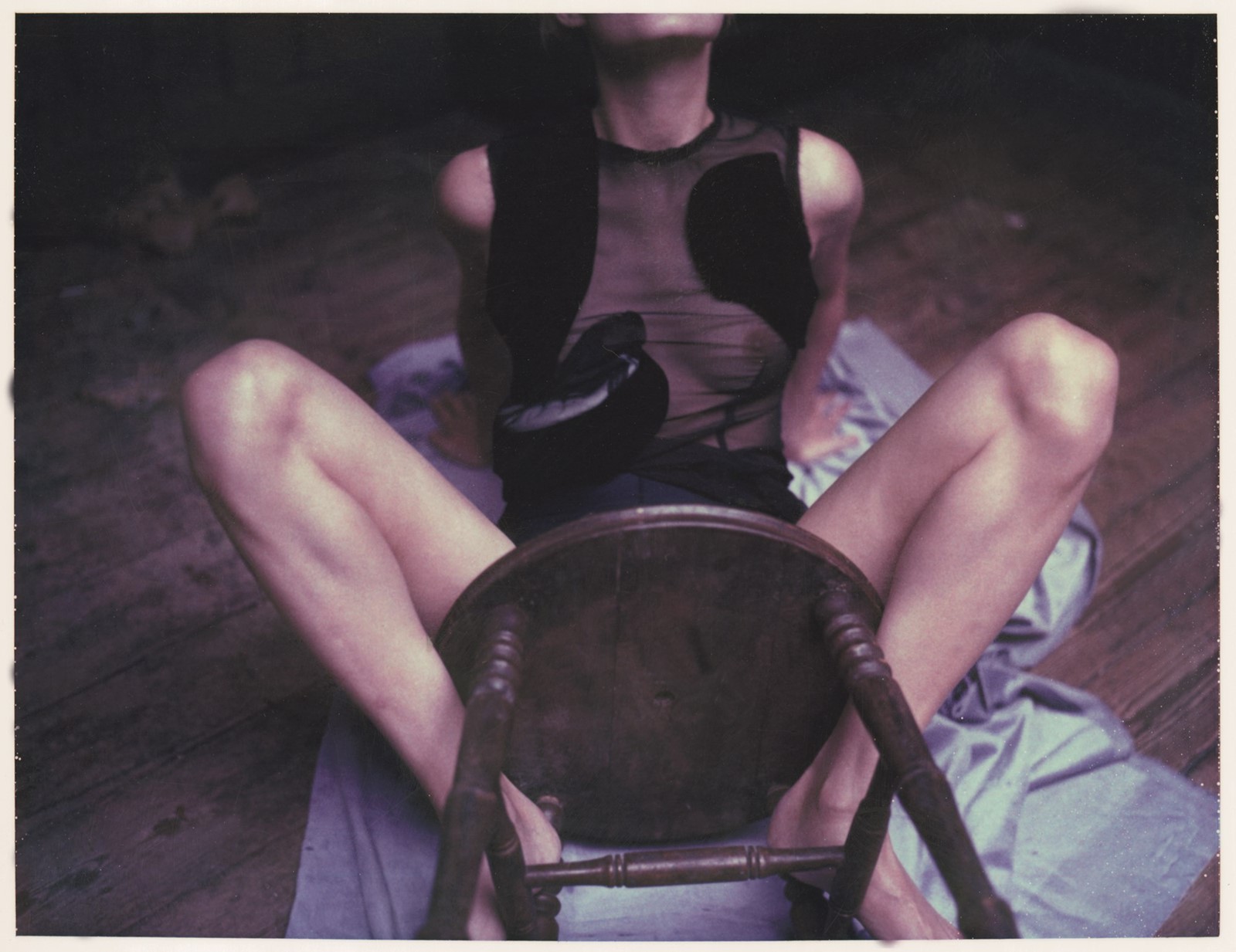
Tim Blanks, journalist
“In the mid-80s, when Japan’s fashion avant garde was still in its first overwhelming flush in the West, I flew to Tokyo to interview its principal players. The assignment was quite intimidating. But everyone was unflaggingly generous, gracious, charming. I was almost disappointed. Then came Comme. Already discombobulated by the cab ride to Comme’s surprisingly humble headquarters, I was led into a cold concrete bunker: two metal chairs from the Comme furniture collection and one of those gigantic floor lamps that design freaks went gaga for in the 80s. All else was darkness.
When Rei arrived, she was flanked by two translators, as if to underscore the point that English would not be spoken here. They were black-clad, of course, with a demeanour that suggested handmaidens. Once she and I took to our chairs, the ‘interview’ began. Short question, long translation, long answer, short translation. The exchange took on its own alien rhythm, like a chess match in a non sequitur dimension, with the players chillingly unmatched. As the interrogatee (for that’s how it came to seem), I dutifully perspired, squirmed, whittered on for what may have been days but were more likely seconds. Even though time stood agonisingly still, mine was eventually up. One final inchoate thought flared across the void into which I felt myself plunging. ‘What makes you laugh?’ I gasped, expecting a lengthy re-versioning in Japanese. None came. Rei looked me straight in the eye and said ‘you.’”
“‘What makes you laugh?’ I gasped, expecting a lengthy re-versioning in Japanese. None came. Rei looked me straight in the eye and said ‘you’” – Tim Blanks
Zanna, photographer
“The revolution that is Rei Kawakubo completely redefined the way I dressed – firstly black, black (and a little navy). Black was never worn. Now black is everything. I have more than a 100 black skirts, 100 black jackets and coats and a plethora of blackness that is all pervading, shortly to be shown as 100 Black Skirts and Other Nuances, an installation to launch the Ragged School Emporium at London Bridge. We have green black, magenta black, violet black, violent black, blue black, and the infamous inky black-blue of Comme, a shade all of her own.
I have been asked many times why I wear black. The answer is always ‘don’t you know of Comme, of Rei, of the revolution, of the freedom, of the uniform, the design conscious, immediately identifiable and unifying force’. Let me introduce you now to the freedom, the joy of the twist of the humour. Why is your coat inside out, half finished, stitched wrong, ugly, ripped, fraying? Why is the zip visible, why is there a third sleeve? At all times Rei strikes up a conversation with the viewer and it is with admiration that I say, ‘I’ve had this one for 20 years’. Yes, old Comme, early pieces, the holy grail of ‘I was there’. This is my best expression of myself, when punk slipped into the background this one will run and run and because she knows we old punks are there with her. She nudges us with punky memorabilia to lighten the oppressive mood.
I walked into Comme on the very sad day of the death of my nephew and there hanging up was the first of the Watanabe protégé pieces. The blue-checked boiled hobo dress sang to me. At the funeral everyone asked why was I was wearing a dress made from J-Cloth. It was a light, a beacon, a small joy. It is one of the most amazing things I have ever owned. I look like a hobo bag lady in it and it cost a fortune.
I hosted the launch of Comme 2 here at the Ragged School Emporium. I wanted to host a Comme guerrilla shop here as well when they were the rage, but shortly afterwards Dover Street Market launched here in London and the random factor stopped. The Comme perfumes are the only fragrances for me. I enjoy each new vision, their modernity, their original scent is the essence of the European street, of foreign cigarettes and of incense.”
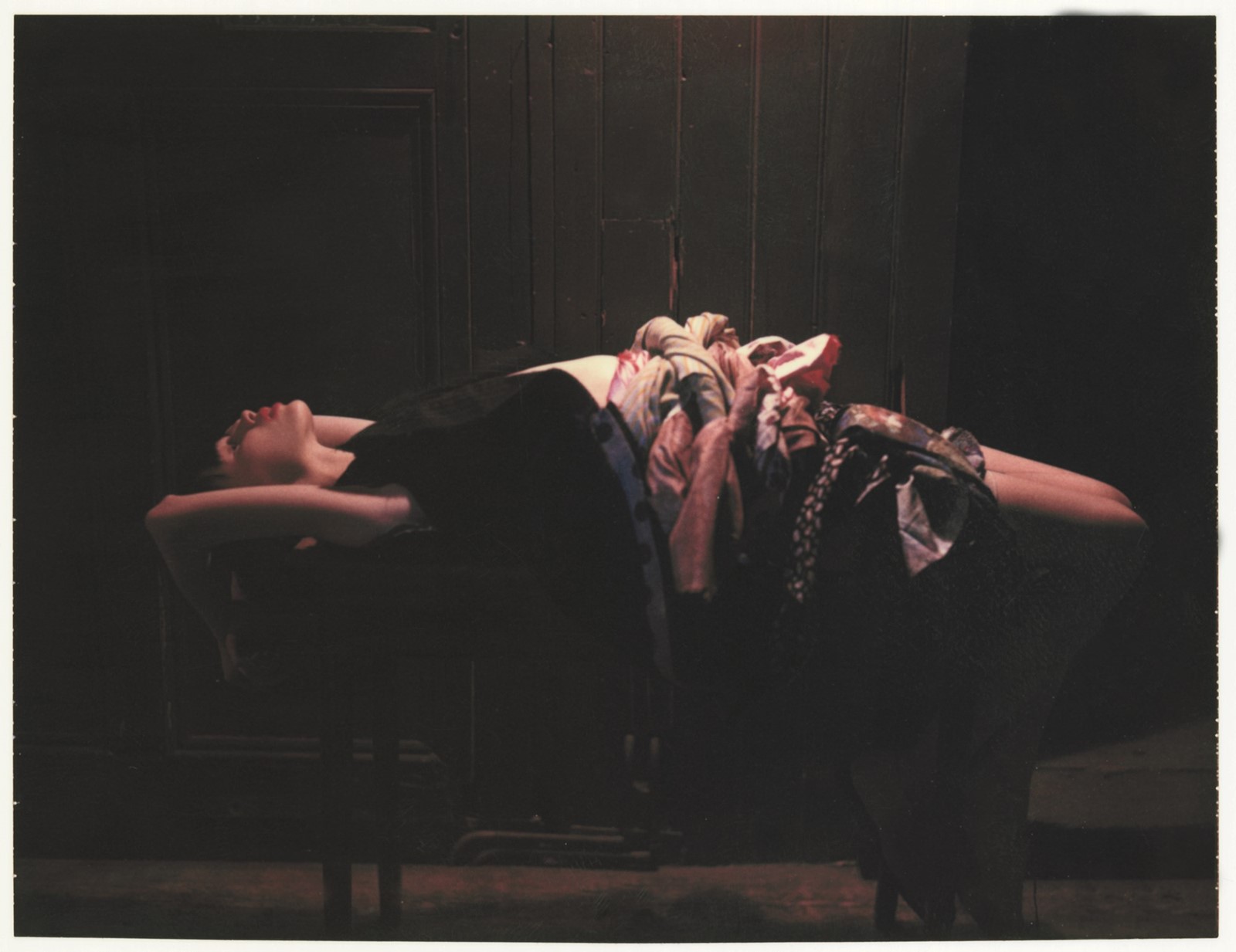
Rei Kawakubo
“The main pillar of my activity is making clothes, but this can never be the perfect and only vehicle of expression. I am always thinking of the total idea, and the context of everything. Fashion alone is so far from being the whole story. It seems that with fashion, as with art, things are getting easier in one sense but at the same time it is getting harder to be stimulated about things or excite people. Without that impetus of creation, progress is not possible. All kinds of ways of expression are spreading out all over the place, information is overflowing, and it’s harder and harder to be excited about anything. In order to be stimulated or moved in the future, we probably have to go into space and look at our world from there.
“Without that impetus of creation, progress is not possible” – Rei Kawakubo
What do I think is an unyielding spirit? It would be wonderful if everyone had it in equal measure. But it’s impossible. This defiant mentality can also be called the fight against absurdity and injustice and the power (authority) that thrives around it (that is rampant). One cannot fight the battle without freedom. I think the best way to fight that battle, which equals the unyielding spirit, is in the realm of creation. That’s exactly why freedom and the spirit of defiance is the source (fountainhead) of my energy.”
All clothing is from the Comme des Garçons S/S10 collection
This article was originally published in the S/S10 issue of AnOther Magazine.
